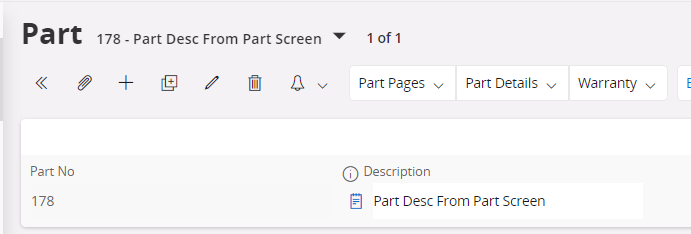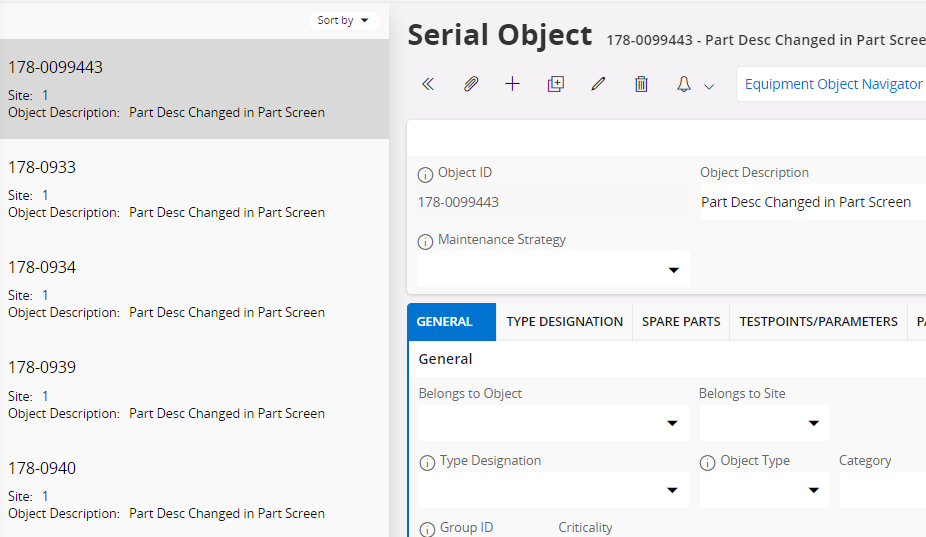The description of the relevant part from the Part screen is inherited as the description of the Serial Object when a Serial Object is created (Service > Equipment > Serial Object > Serial Object). Once the object is created, the description can be changed in the Part and Serial Object screens.
If the description of the Part screen is changed for a Part then the Description(s) of the corresponding Serial Object(s) is/are changed accordingly. But not the other way round.
The Description of the Serial Object can be changed. Lets say we amend a Serial Object with a different description and then for some reason we decided to change the description of the relevant part in the Part screen. Once the description is changed, the description of the Serial Objects (all connected to the specific part) will be overwritten.
Therefore it feels like there is a gap in this function.

Create a Serial Object with different Description

Then update the description in the Part screen

Notice that the descriptions of all Serial Objects have been changed, including the one with custom description







